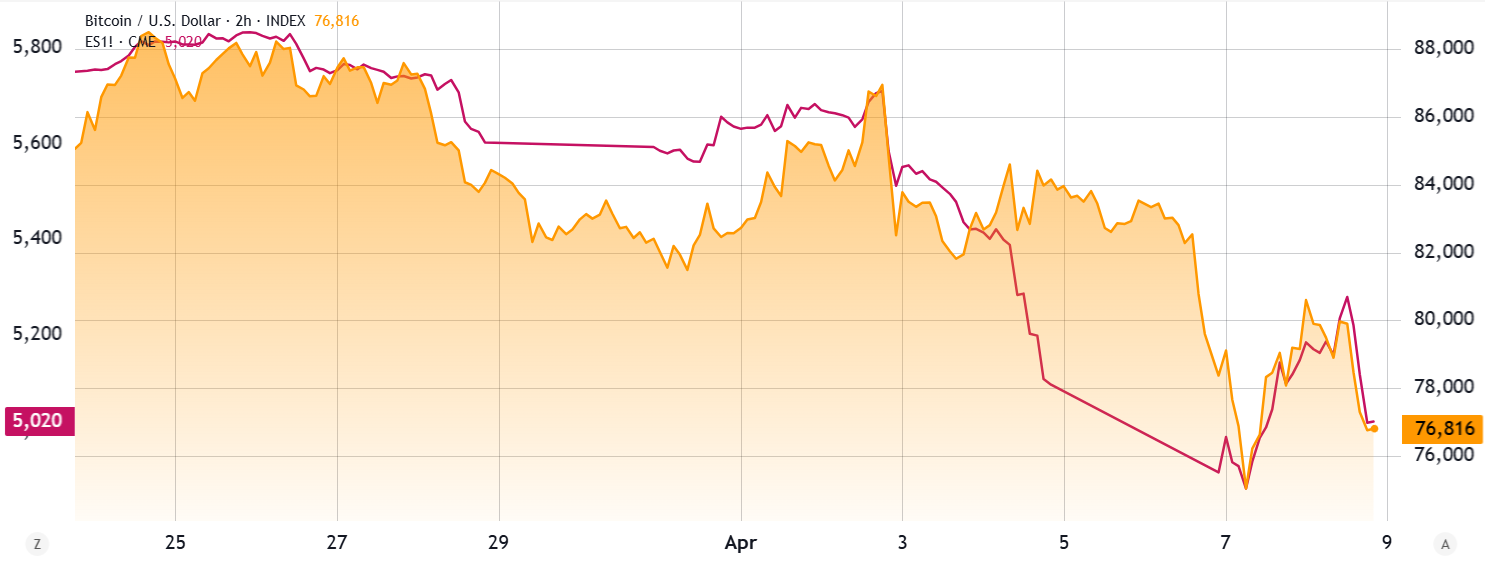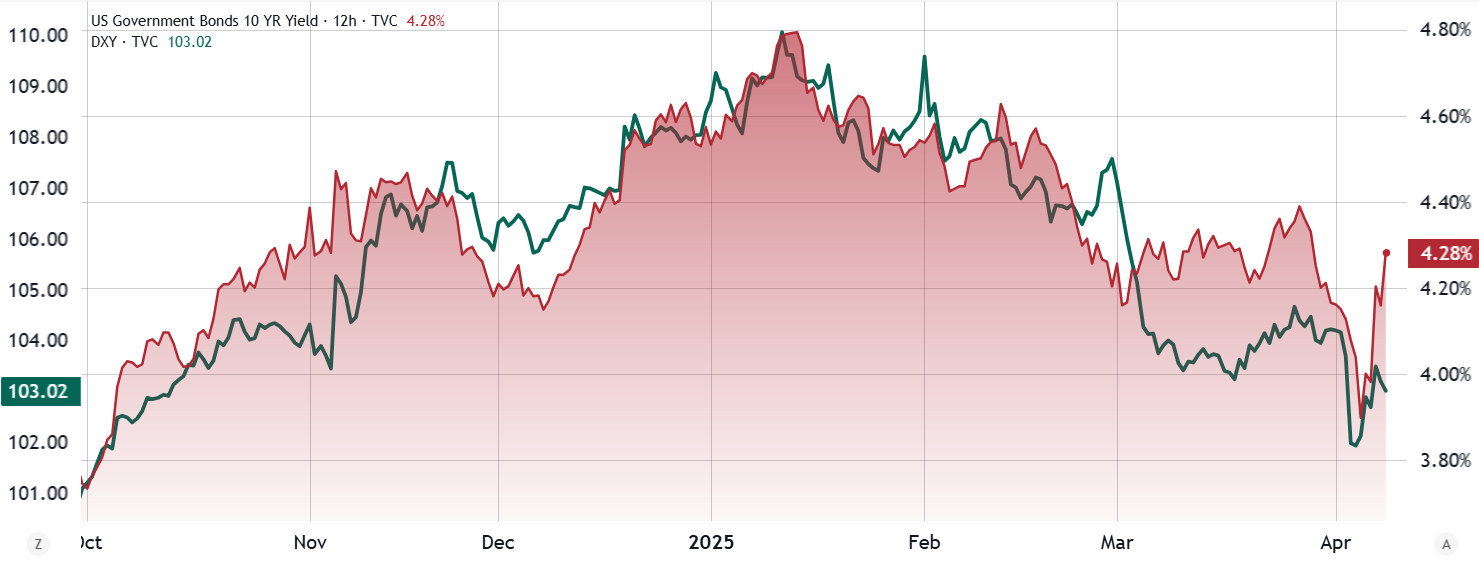Source: Cointelegraph Original: "{title}"
Cryptocurrency and stock traders were hoping for a last-minute turnaround to avoid a 104% tariff on Chinese goods, but the White House confirmed in a press conference that the new tariffs would take effect on Wednesday (April 9). The market took a sharp downturn when President Trump's trade advisor, Peter Navarro, stated that the tariffs "are not a bargaining chip."
On Tuesday, the S&P 500 index closed down 1.6%, giving back an early 4% gain. This round of declines has led traders to question whether Bitcoin (BTC) can regain upward momentum amid a deteriorating macroeconomic backdrop.
The spiraling U.S. debt issue creates opportunities for Bitcoin
Between April 2 and 7, the S&P 500 index plummeted 14.7%, triggering panic among Bitcoin holders and causing BTC prices to dip below the $75,000 mark—a five-month low.

S&P 500 futures (left) vs Bitcoin against USD (right) chart Source: TradingView/Cointelegraph
According to Yahoo Finance, President Trump stated during a meeting with Israeli Prime Minister Benjamin Netanyahu on Monday that his goal is to "reshape trade patterns" and hinted at the possibility of "permanent tariffs, but there is also room for negotiation." Amid this uncertainty, corporate IPOs and merger activities have been delayed, and leveraged loans and bond issuances have come to a standstill.
Clearly, if the risks of a trade war diminish, the stock market is likely to see a rebound. Economists warned that the imposition of tariffs could trigger inflation and significantly increase the risk of an economic recession, as reported by Reuters. However, assessing the impact on Bitcoin prices remains challenging—some investors view this cryptocurrency's fixed monetary system as a hedge against the ongoing expansion of global fiat currencies.
Short-term correlation weighs on BTC, but rate cut expectations may reverse the situation
In the short term, the positive correlation between Bitcoin and U.S. stocks may persist. However, the U.S. government's fiscal predicament creates potential opportunities for Bitcoin. On Tuesday, the yield on the U.S. 10-year Treasury bond rose to 4.28% (having dropped to 3.90% on Monday), indicating that investors are demanding a higher risk premium.

U.S. Dollar Index DXY (left) vs U.S. 10-Year Treasury Yield (right) Source: TradingView/Cointelegraph
The rising cost of rolling over $900 billion in federal debt maturing in the next 12 months may exacerbate fiscal imbalances and weaken the dollar. The DXY has fallen from 104.2 on March 31 to 103.0 on Tuesday, diverging from Treasury yields. This situation may support Bitcoin prices—BlackRock CEO Larry Fink also held this view in a letter to investors on March 31.
Michael Gapen, Chief U.S. Economist at Morgan Stanley, noted in a client report on Tuesday: "The Federal Reserve should maintain current interest rates for a longer period." According to his latest forecast, the Fed may keep rates at 4.25%-4.50% until March 2026, emphasizing that "only an economic recession can change the decision-making logic."
As traders realize the Fed is caught between avoiding recession and controlling inflation, Bitcoin's upward momentum may strengthen. While the timing of a breakout remains difficult to predict, the protraction of trade war issues may drive funds toward scarce assets like Bitcoin—especially amid growing concerns over dollar depreciation.
This article is for general reference only and is not intended to be, nor should it be construed as, legal or investment advice. The views, thoughts, and opinions expressed here are solely those of the author and do not necessarily reflect or represent the views and opinions of Cointelegraph.
Related articles: Binance states that Bitcoin shows "resilience," outperforming stocks and gold amid stock market declines.
免责声明:本文章仅代表作者个人观点,不代表本平台的立场和观点。本文章仅供信息分享,不构成对任何人的任何投资建议。用户与作者之间的任何争议,与本平台无关。如网页中刊载的文章或图片涉及侵权,请提供相关的权利证明和身份证明发送邮件到support@aicoin.com,本平台相关工作人员将会进行核查。




